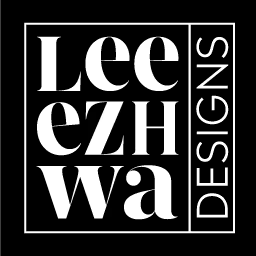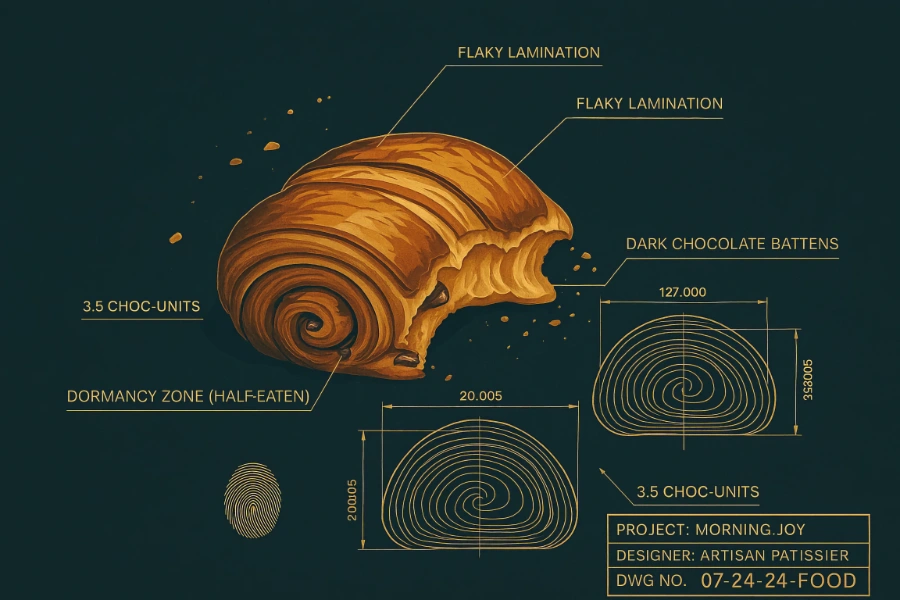The Pain au Chocolat
It started with a pain au chocolat.
Not a metaphorical one. A real, flaky, butter-soaked pastry with two neat sticks of chocolate in the middle. The kind I grew up eating in France, where every bakery window seduces you with golden rows of them.
One morning, I bit into mine and froze. The chocolate wasn’t in the center. It was off to the side, breaking the symmetry.
And that tiny imperfection triggered something in me. I didn’t just eat the pastry. I analyzed it. I asked: Who designed this? Why wasn’t there a system to ensure consistency? What would happen if you treated pastries like prototypes?
It was absurd, but also profound. That morning, over a pain au chocolat, I realized I wasn’t just consuming life. I was evaluating it like a designer. And in that moment, I saw: life itself could be a design brief.
The Problem: Living Without a Brief
Here’s the problem: most people live without a brief.
Design briefs exist for a reason. They provide clarity: the objective, the audience, the constraints, the deliverables. Without one, projects drift.
Life without a brief drifts too. You wake up one day and realize you’ve been improvising based on other people’s expectations. Culture says “get the diploma.” Parents say “get the stable job.” LinkedIn says “get the title.” You execute, but you’re executing the wrong project.
The research backs this up:
A Stanford study on life design (Designing Your Life, Burnett & Evans) found that people who apply design thinking to career decisions report 2x higher satisfaction with their paths compared to those who don’t.
Gallup reports that 85% of people worldwide feel disengaged at work, which is what happens when you execute briefs you never agreed to.
Without a brief, you drift.
Personal Anecdote: My First Life Brief
That day with the pastry, I scribbled a note in my journal:
Objective: Live a life that feels like mine.
Audience: Me, first. Then the people I want to impact.
Constraints: Cultural scripts, ADHD brain, fear of failure.
Deliverables: Work that feels undeniable, stories that resonate, freedom to create.
It wasn’t perfect. But it was mine.
And it changed everything. Because the moment you treat life as a design brief, you stop waiting for it to “make sense.” You start prototyping.
Framework: Life as Design Thinking
Design thinking is built on five stages: Empathize, Define, Ideate, Prototype, Test. What if you applied those to life?
Empathize: Listen to yourself the way you would a client. What do you actually need?
Define: Clarify the real problem. Is it the job, or the fact that the job doesn’t align with your values?
Ideate: Brainstorm possibilities. No filters. Write them down.
Prototype: Take micro-steps (remember Post #5), test small experiments instead of giant leaps.
Test: Get feedback from reality. Iterate. Adjust. Repeat.
Research shows this works. A study in the Journal of Vocational Behavior found that people using design-thinking tools for career planning reported significantly less anxiety and higher confidence.
Life doesn’t come with a manual. But it can come with a brief.
ADHD and Pattern Spotting
Why did a crooked pain au chocolat set me off? ADHD.
ADHD brains are wired for pattern recognition. We notice inconsistencies others overlook. What looks like “overreacting” is often hyper-sensitivity to detail.
Studies in Neuropsychology Review show that ADHD adults exhibit heightened divergent thinking, the ability to connect unusual dots. That’s why so many creative breakthroughs come from neurodivergent minds. We see pastries as prototypes. We see life as design briefs.
What felt like a distraction was actually my gift. ADHD didn’t just make me restless; it made me a designer of systems, a storyteller of patterns.
The Shift: From Consumer to Designer
That pain au chocolat was trivial. But it became symbolic. I stopped consuming life passively and started designing it actively.
Instead of asking: Am I doing the right thing? I asked: Am I designing the right brief?
Instead of waiting for approval, I prototyped. Instead of fearing mistakes, I treated them as iterations.
And that shift turned everything around. I wasn’t a passenger anymore. I was a designer.
Actionable Takeaways
If you want to start writing your own life brief, here’s how:
Write Your Objective. Not your parents’ or LinkedIn’s. Yours.
Define Your Audience. Who are you really doing this for? Yourself? Your kids? Your clients?
List Constraints. Be honest: money, geography, mental health, ADHD, etc. Constraints make briefs better.
Define Deliverables. What do you want to produce? Not just in work, but in life.
Prototype One Step. Test a small piece of your brief this week. Adjust as you go.
Conclusion: Life Is Designed, Not Delivered
The pain au chocolat wasn’t just breakfast. It was a blueprint. It showed me that life, like design, isn’t something you consume. It’s something you create.
And once you see your life as a design brief, everything shifts. Mistakes become prototypes. Constraints become creativity. And the story becomes yours again.
Because life isn’t delivered. It’s designed.
Still Hungry?
Don’t stop here. If this post lit a spark, you’ll want to dive into more ideas cut from the same cloth, sharper thinking, bolder design, and zero fluff.
The Day I Fired My “Inner Impostor Boss”
How ADHD magnifies impostor syndrome and what it takes to shut it down.
From Corporate Costume to Thin Creative Skin
Why hiding behind conformity kills originality and how authenticity is your new armor.
Permission Slips for Reinvention - Why no one else is going to hand you one.
Stop waiting for diplomas, managers, or permission... write your own slip.


